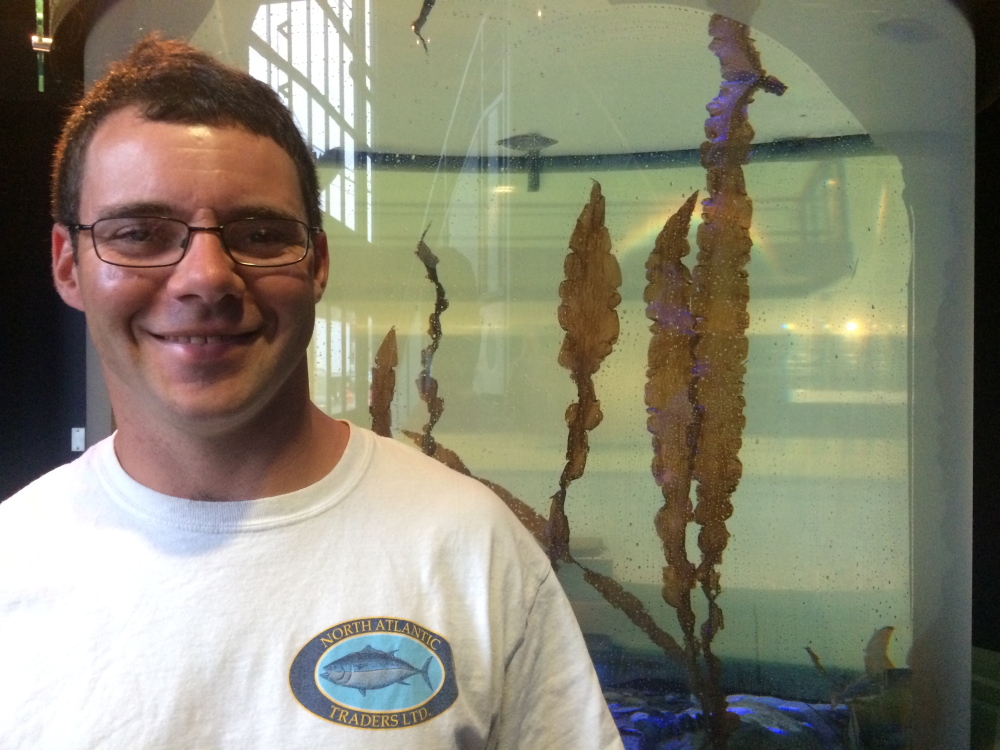Zachary Whitener grew up on Long Island and has been lobstering and striper fishing since age 10. Now 28, he’s at the forefront of a unique striped bass study.
Whitener, a research associate at the Gulf of Maine Research Institute in Portland, wants as much as anyone to have data that will tell which rivers Maine’s stripers come from. Right now he said biologists don’t have a clue.
In the past year, after the species’ continued decline, new bag limits on striped bass were implemented for recreational fishermen along the East Coast.
Whitener said if biologists knew which river most of Maine’s stripers hatch from, it would help them better protect the struggling species.
Since the Snap-A-Striper program was launched by the institute three years ago, it has provided a useful data set of photographs of stripers caught by recreational fishermen, as well as fish heads sent in by fishermen who kept a striper to eat.
It’s a good start, Whitener said, but the institute needs more samples for its groundbreaking study aimed at identifying the rivers that sustain Maine’s striped bass fishery.
Has this study been done elsewhere?
Ours is the only program in the Northeast. We have gathered 100 photos each of the past two years and 60 heads. The photos are taken with the card used in the snap-a-striper program. It’s used for scale and (written on it the fishermen) tells where the fish was caught. Using the photos we can tell the shape of the fish to tell where it spawned.
To you and I the stripers all look the same. But there are minute differences, about 25 measurements done in a computer that can tell how far the dorsal fin is from the tail, and so forth. The fish heads we use to get the otolith (a calcium carbonate structure in the fish ear) to age the fish using a chemical analysis. The otolith tells the water chemistry of the river the fish came from, so it tells us where the fish hatched.
Using the shape study and the ear bone analysis, we can tell what river the fish is from, and tell with some sort of certainty what a Kennebec striper looks like, for example. That’s the hope.
But this study has no dedicated funding. Right now we are volunteering just like the fishermen. The data collection is simple. But the chemical analysis and computer analysis is expensive.
How many fish do you need for the study?
In science, the more samples the better the study. Our goal is 50 otoliths per year. The photos coming in have been about 100 a year. This year we are close to 200, so that’s very good. But we need more heads to get the otoliths. The first year we had 13 heads, last year we had 47 heads, and this year so far we have 12. Obviously we are not advocating for someone to harvest a fish they are not otherwise going to fillet. But if they are going to keep a fish, they might as well put the head to use so we can learn about the fishery. The majority of the heads have come from the Saco River, Casco Bay and the Kennebec River. We would like more from the Kennebec River because it’s the only known river in Maine to have a spawning population of striped bass. We’d also like some from the Penobscot River.
What will this study ultimately tell you?
Our biggest question is, what contribution do the stripers that spawn in the Kennebec make to Maine’s fishery? Once we analyze the data we will get an idea how important the Kennebec stock is to Maine. We don’t know. And it’s very important for striped bass management. If most of Maine’s striped bass come from the Hudson River, then the management that takes place on the Hudson has a great impact on Maine.
We are actively pursuing grant money for this project. Hopefully we’ll know in the next six months if we have a grant to do the analysis. In the meantime, we are building an amazing data set. And the more data, the stronger our grant proposals will be.
It is an ongoing study. At this point, the Snap-A-Striper program will go on indefinitely.
Send questions/comments to the editors.




Success. Please wait for the page to reload. If the page does not reload within 5 seconds, please refresh the page.
Enter your email and password to access comments.
Hi, to comment on stories you must . This profile is in addition to your subscription and website login.
Already have a commenting profile? .
Invalid username/password.
Please check your email to confirm and complete your registration.
Only subscribers are eligible to post comments. Please subscribe or login first for digital access. Here’s why.
Use the form below to reset your password. When you've submitted your account email, we will send an email with a reset code.